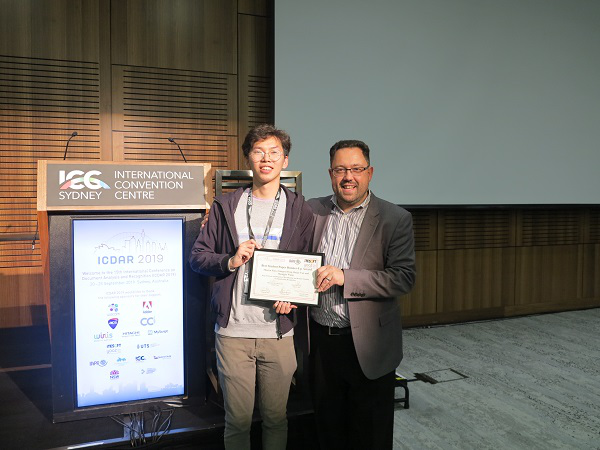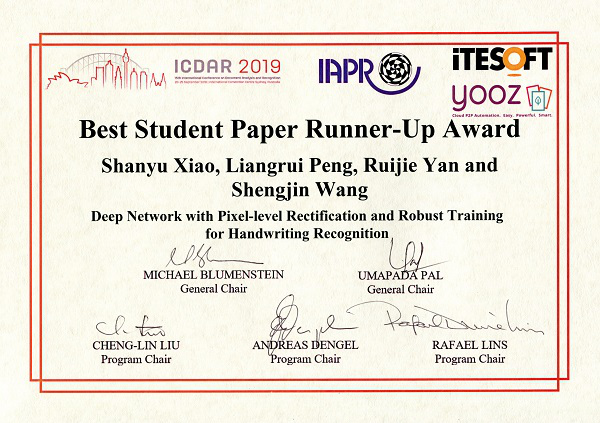Recently, Xiao Shanyu, a 2019 master student and Yan Ruijie, a 2017 doctoral student of the Department of Electronic Engineering, Tsinghua University published a paper "Deep Network with Pixel-level Rectification and Robust Training for Handwriting" at the 15th International Conference on Document Analysis and Recognition (ICDAR 2019)", and won the ICDAR 2019 "Best Student Paper Runner-Up Award". The paper authors are master student Xiao Shanyu, associate professor Peng Liangrui, doctoral student Yan Ruijie, and Professor Wang Shengjin from the Department of Electronic Engineering. Xiao Shanyu, Yan Ruijie, and associate professor Peng Liangrui were present at the ICDAR 2019 conference held a few days ago in Sydney, Australia. Xiao Shanyu, the first author of the paper, gave an oral report at the conference and answered questions from the participating experts in Q&A session after the report.

Professor Michael Blumenstein (right), chairman of ICDAR 2019, presented the prize to Xiao Shanyu (left).
ICDAR is the largest international academic conference in the field of text recognition sponsored by the International Association for Pattern Recognition. It has been held every two years since 1991. At the ICDAR 2019, the total number of papers submitted was 403 and the number of papers accepted subject to oral report was 52, with an acceptance rate of about 13%. In addition, 176 papers subject to posting report were accepted. More than 500 people participated.

Certificate of ICDAR 2019 Best Student Paper Runner-Up Award
Handwriting recognition is an artificial intelligence technology that converts handwritten document images into full-text searchable text. It is a challenging classic topic in the field of text recognition. Deep neural network is the current mainstream technology in the field of machine learning. For handwritten texts with large changes in writing styles and a limited number of training calibration samples, how to design a deep network to seek stable feature representation and improve the generalization ability of the model on test samples is a vital question. The paper introduced a pixel-level stroke deformation correction method based on convolutional neural network at the feature extraction level, and a variety of regular and robust training strategies. Finally, the results comprehensively superior to methods reported in the literature were obtained on three international public handwritten text sample sets in English, French and Arabic. The research achievement also has reference significance to natural scene image text recognition and other research topics.